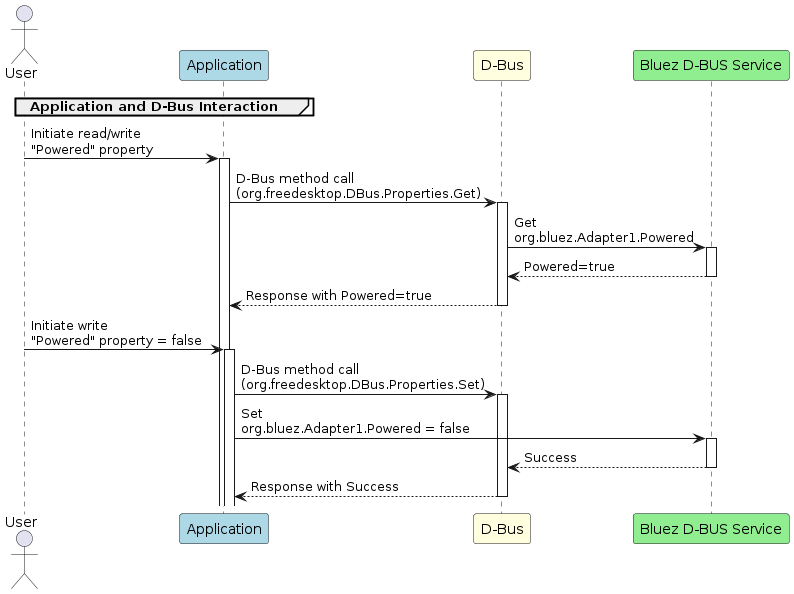Introduction:
Having been away for over 6 years, I find myself returning to the world of Bluetooth technology, particularly focusing on BlueZ and the challenges it presents with its DBus API. Despite the advancements during my absence, navigating BlueZ remains daunting. However, armed with newfound enthusiasm and a growing affinity for Zephyr RTOS, I am eager to revive Bluetooth implementation on Linux with fresh ideas and insights.
Getting ready:
To kickstart your journey with BlueZ, you’ll need:
1. A Linux System: Ensure Bluetooth services are running on your Linux setup. 2. Bluetooth Adapter: Most modern systems come equipped with one, or you can easily obtain a USB Bluetooth dongle.But why stop there? Let’s add some excitement:
3. Bluetooth Peripheral: Utilizing Zephyr RTOS, we’ll employ the nRF52840DK from Nordic Semiconductor as our Bluetooth peripheral 4. Raspberry Pi as a Linux Host: This versatile platform will serve as our Linux host, facilitating seamless integration and development.Refreshing DBUS:

One of the most challenging aspects of diving into BlueZ is mastering DBus communication. Above is a simplified representation of how an application can control the power state of a Bluetooth adapter using the DBus interface. In our next article, we’ll delve deeper into this sequence with an example program using the GDBus API, providing practical insights and solutions.
Conclusion:
With the foundation laid out, we’re poised to explore and innovate in the realm of Bluetooth technology once again. Stay tuned as we unravel the complexities of BlueZ, DBus, and Zephyr RTOS, paving the way for exciting new possibilities in Bluetooth implementation on Linux.
Note: This blog is making a comeback.